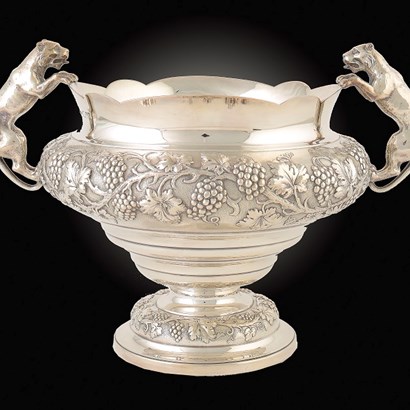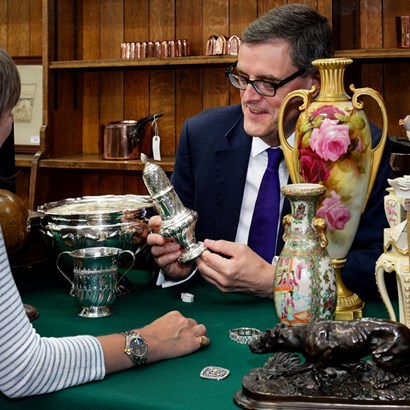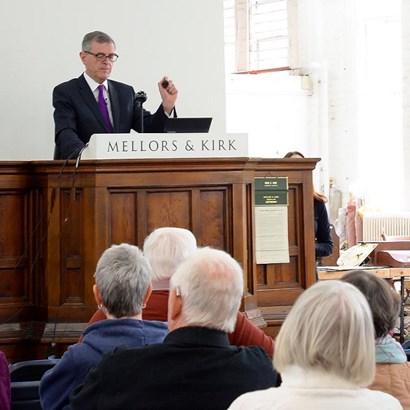Auction Insights
Jane Austin First Edition
Rare first editions of some of the most famous books in the World will be sold in Nottingham.
Have you ever wondered what it feels like to write a blockbuster novel and be catapulted from complete obscurity to super stardom? All it takes is a great idea that captures the imagination. Harry Potter undoubtedly did that and J K Rowling is one of the wealthiest people in the country because of that one brilliant concept. Of course, put like that it sounds easy. Lightbulb moments of inspiration happen, but there is so much more to the craft of good writing than that.
Few knew that better than that mistress of elegant prose Jane Austen (1775-1817). Pride and Prejudice appeared in 1813 in three small volumes. So unknown was she at the time that instead of her name on the title page, appears “By the author of Sense & Sensibility”. That was her first book and was published in 1811 as being “By a Lady” and for which she had to pay the publisher, Thomas Egerton for the cost of publication. This is just one of the marvels from a modestly sized collection of antiquarian books assembled by a gentleman in the 1950s that Mellors & Kirk is to auction for his descendants. This copy of Pride & Prejudice, which could make £3000-£5000 is of added interest because it contains the signature of the Rev Edward Meyrick. It was to his private school in Ramsbury, Wiltshire that Jane Austen’s favourite nephew (and subsequent biographer) James Edward Austen-Leigh was sent as a thirteen year old boarder.
For lovers of Austen’s novels there are also the three volume first edition of Jane Austen’s Emma, 1816 and the four volumes of Northanger Abbey, 1818, both of which are also in the Sale.
The first editions of an author’s first and second published works can be very valuable because publishers were reluctant to print too many, when an author was an ‘unknown.’ Old books as a subject may seem dull, but just consider how you would feel handling a precious two or three hundred year old first edition of the young Keats or the Brontes – books the influence of which was so profound they shaped the way we interact and think, whether we realise it or not. That is why so many book collectors around the world feel passionately, almost reverently, about treasuring these rare, fragile works, when they could download the text in an instant.
When it comes to influential Shakespeare ranks with the Bible according to Dessert Island Discs. That is one reason why I was amazed to find a slim volume of 1632 containing The Merry Wives of Windsor and A Midsummer Night’s Dream from the famous Second Folio.
Shakespeare was the first playwright whose works appeared in the majestic folio format. Any printed example of Shakespeare of this early date is very, very rare, complete copies of the First and Second Folios are extremely so and incredibly valuable. A First Folio complete with the thirty six plays sold at auction at Christie’s in New York in 2001 for over six million dollars.
The small collection of books was formed on a modest budget but with great discernment. Dr Johnson, Hazlitt, William Wordworth and Congreve rub shoulders with 19th century greats, such as Dickens, Darwin and Oscar Wilde. Their books were chosen not as investments but simply for the pleasure of reading, and perhaps trying to imagine how earlier readers might have felt on turning those same pages in the 17th, 18th and 19th centuries.
All the books are volumes of literature and are in English, or first translations of foreign books such as Montaigne’s Essays. Except one, that is. So small I almost overlooked it, is Dr Sydenham’s 1694 “Compleat Method of Curing almost all Diseases”. I love the “almost”! In this extraordinarily rare but handy little volume you will find the most up to date medical knowledge. Thomas Sydenham (1624-1689) was the author of a medical textbook that was relied upon for two hundred years. A friend of John Locke and Robert Boyle, he was certainly not a ‘quack’ so I will leave you with this snippet from the London of Samuel Pepys, all for Sydenham’s treatment for haemorrhoids: “Let 10oz of blood be taken from the right arm”, take internally several times a day three potions, the ingredients of which included “Flowers of Brimstone” (sulphur) ground melon and poppy seeds and almonds, abstain from eating meat and finally, to be applied “to the part affected”, “4ozs of Frog’s Sperm Water, litharge (lead oxide) and opium”.
< Back to Auction Insights



